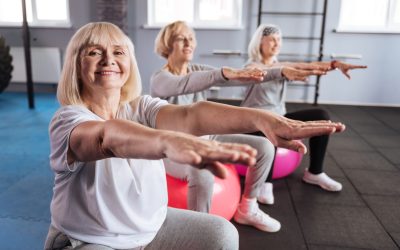How You Can Be Active When You Have Low Back Pain
Most us will experience some form of low back pain (LBP) during our life. There can be many things that cause LBP, however it’s not always clear what the cause of the pain might be and it is also often not dangerous.
“Most back pain is mechanical, meaning day-to-day life stresses lead to overload,” says Ted Dreisinger, PhD, a trustee of McKenzie Institute International, an advocacy group for people with musculoskeletal conditions and associate editor of The Spine Journal. “A small number of cases – less than 1% – are caused by something more serious, such as a fracture, spinal tumour or systemic disease,” he adds. “These require medical attention.”
Generally speaking, people who are more active have less back pain over time – plus, being active also boosts your mood. Medical professionals therefore recommend that those with LBP try to be as active as the general public
The NHS advise that you should not rest for more than a few days after low back pain starts. This is because the spine is one of the strongest parts of the body and is designed for movement, with strong muscles and ligaments surrounding it to both protect and support it. It is therefore advised that you remain active, because the spine requires movement in order to get better.
Staying active will reduce the severity of the pain and keep you feeling positive. It also keeps the muscles strong and prevents the joints from getting stiff – and stiff joints can become painful.
There is no one perfect exercise for lower back pain and so the choice of activity really comes down to your ability/fitness level, and what you enjoy – because you want to choose a type of exercise you will stick to. An example of some exercises you can try to help with LBP:
- Resistance Training
- Yoga
- Pilates
- Walking
- Swimming
It is not a good idea to do any exercise which involves lifting heavy objects or which involves high-impact moves such as jogging, jumping, basketball or anything that puts stress on you joints and make your back pain worse.
Sleeping Positions
It is also worth experimenting with some different position to lie in, for example when going to sleep, in order to help support you and provide more comfort.
Positions to try include:
- Lie on your side with a firm pillow between your knees. This helps prevent your upper leg from pulling your spine out of alignment and reduces stress on your hips and lower back.
- Lie on your back, with a small pillow under the back of your knees. This helps to reduce the stress on your spine and supports the natural curve in your lower back.
- Sleeping on your stomach can put the spine out of position so if you sleep like this it is best to either use no pillow or a flat pillow for your head. You should also try placing a flat pillow under the stomach and pelvis area to help provide a better alignment for the spine.
It is always important to speak with your GP first and they can advise if any additional medication is required or any specific exercises should be recommended or avoided.
Links




